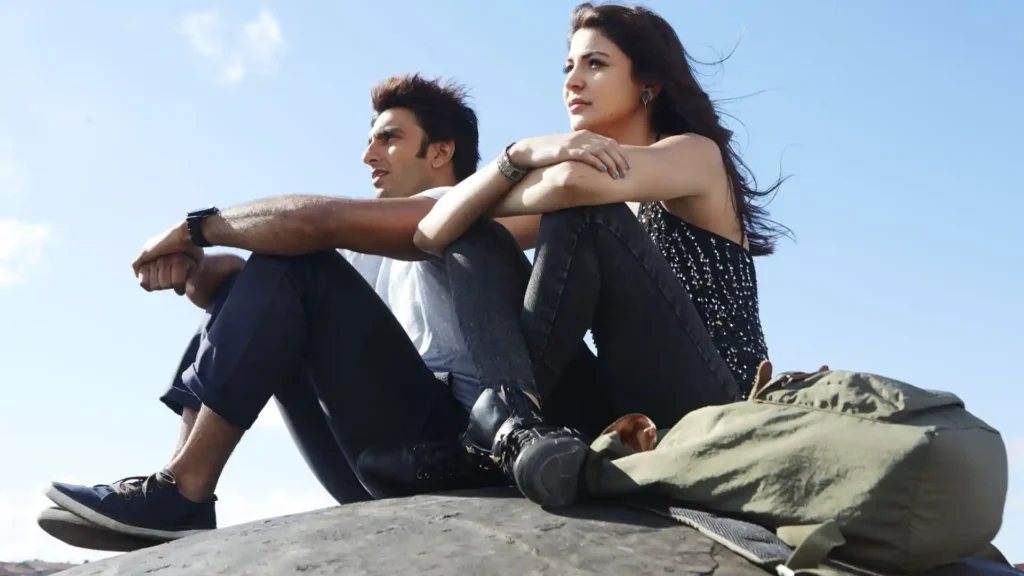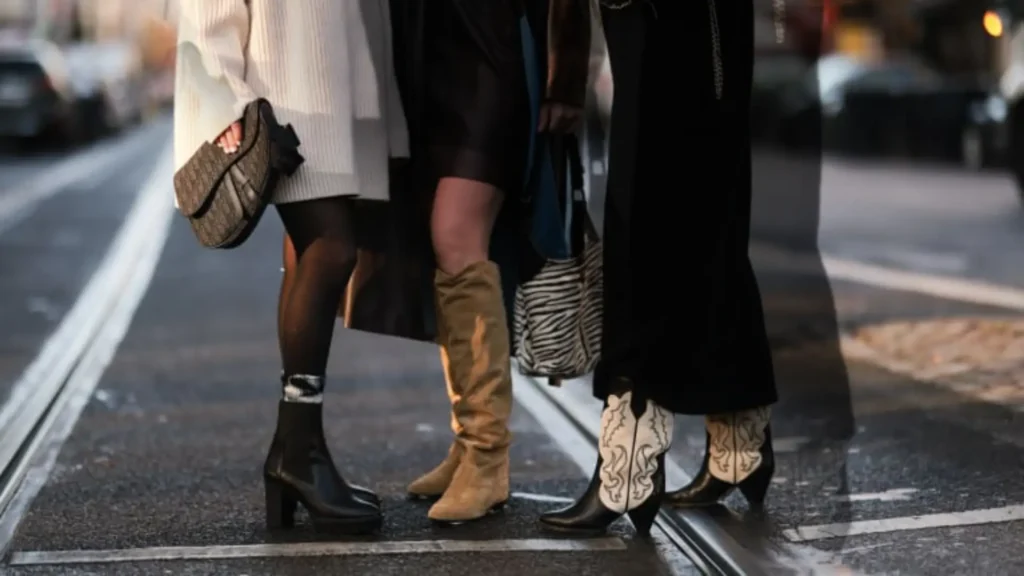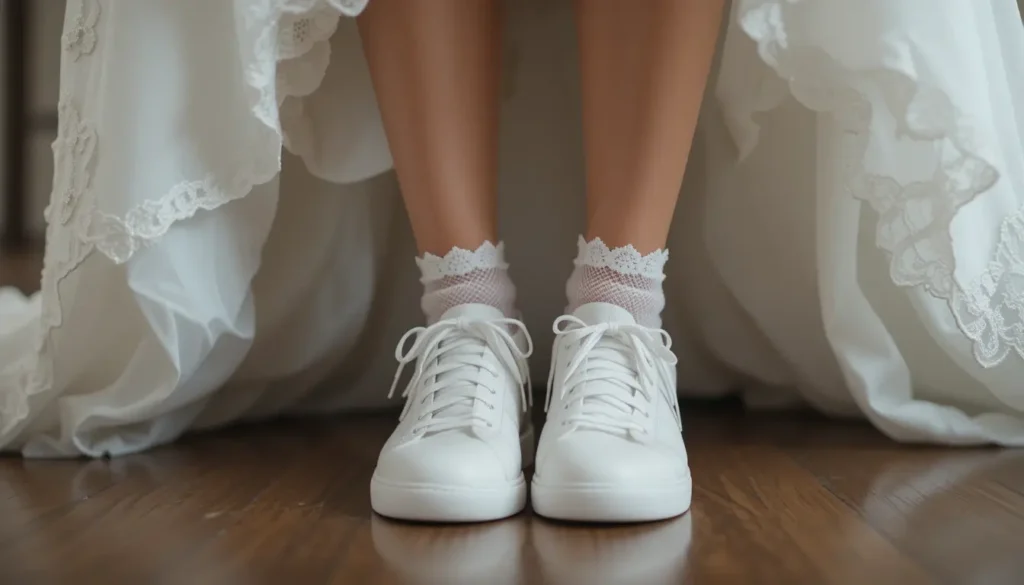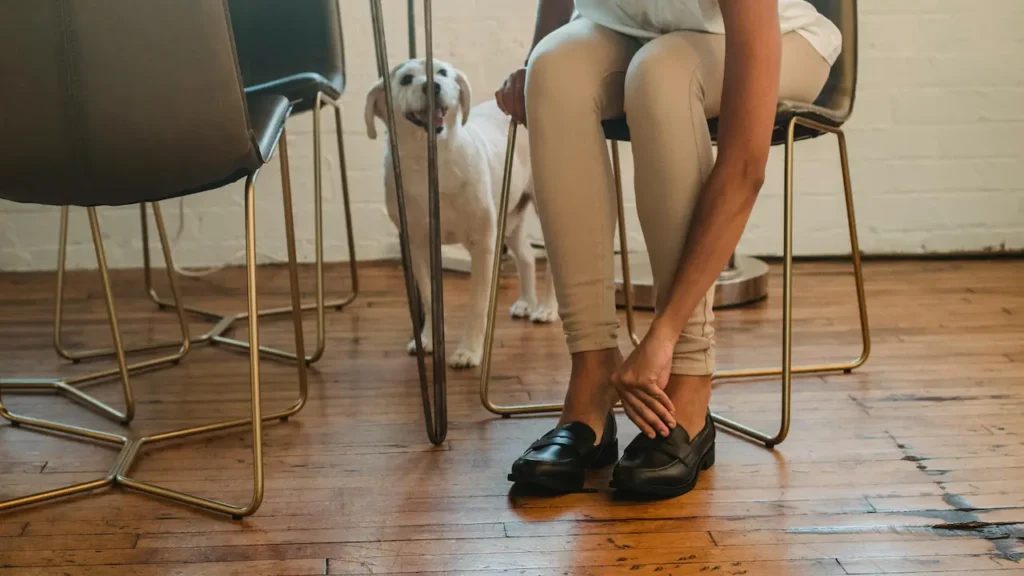Have you ever watched a Bollywood movie and been dazzled by the sparkling footwear on screen?
Bollywood, India’s vibrant film industry, is a trendsetter. It does more than tell stories—it shapes fashion across the nation.
From glittering high heels to intricately embroidered juttis, Bollywood influences what millions of Indians wear on their feet. This article dives deep into how Bollywood drives Indian footwear fashion. It explores the roles of films, iconic characters, celebrities, designers, and more in creating trends that define style.
Bollywood’s Massive Influence on Fashion
Bollywood is a cultural juggernaut in India. It produces over a thousand films annually, reaching audiences in cities, towns, and villages. These films are watched by millions, both in theaters and on streaming platforms. Fans admire the glamorous outfits of their favorite stars, and footwear is a key part of this allure. When a heroine dances in elegant sandals or a hero struts in stylish boots, viewers take notice. They want to emulate that look.
Movies showcase a wide range of footwear styles. Historical dramas highlight traditional juttis or kolhapuri chappals. Romantic comedies feature sleek heels or trendy sneakers. Action films might show rugged boots. Each genre introduces new styles, sparking trends. Fans flock to markets or online stores to buy what they see on screen. This cycle of inspiration and imitation keeps Bollywood at the forefront of Indian fashion.
The Power of Iconic Characters
Bollywood characters often become cultural icons. Their outfits, including footwear, inspire fans long after the credits roll. For example, in Devdas (2002), Aishwarya Rai’s character, Paro, wore ornate mojari shoes with delicate embroidery.
These traditional shoes became a sensation. Women across India sought similar designs for weddings and festive occasions, boosting demand for mojaris.
Similarly, in Padmaavat (2018), Deepika Padukone’s royal character, Rani Padmavati, wore heavy juttis encrusted with jewels.
These shoes inspired a wave of opulent designs. Designers began creating juttis with intricate beadwork, mirror embellishments, and gemstones. Bridal collections soon featured these regal styles, and markets buzzed with demand.
Male characters also drive trends. In Bajirao Mastani (2015), Ranveer Singh’s character, Peshwa Bajirao, wore traditional Peshawari chappals.
These rugged, flat sandals became a favorite among men. Young men paired them with kurtas or jeans for a fusion look. The film’s popularity ensured that Peshawari chappals became a wardrobe staple.
Even supporting characters can spark trends. In Kabhi Khushi Kabhie Gham (2001), Kareena Kapoor’s character, Poo, wore trendy heels that defined early 2000s fashion. Her bold style made chunky heels a hit among young women. Iconic characters, whether lead or supporting, leave a lasting mark on footwear fashion.
Celebrity Influence Beyond the Screen
Bollywood stars influence fashion even when they’re not acting. Their off-screen style is closely followed by fans.
Paparazzi photos of stars at airports, events, or casual outings highlight their footwear choices. For instance, Priyanka Chopra is often seen in white sneakers paired with chic outfits. This has made sneakers a go-to choice for women seeking comfort and style.
Anushka Sharma is another trendsetter. She frequently wears kolhapuri chappals, pairing them with both ethnic kurtas and modern dresses. Her style has revived interest in these traditional leather sandals.
Brands now offer kolhapuris in vibrant colors, metallic finishes, and vegan leather to appeal to modern buyers.
Social media amplifies this influence. Platforms like Instagram and Twitter allow stars to share their looks instantly.
When a celebrity posts a photo wearing stylish footwear, fans rush to identify the brand. Many stars tag the designers or retailers, making it easy for followers to purchase the same shoes. This direct connection between celebrities and consumers fuels footwear trends.
Red carpet appearances also play a role. When stars attend international events like Cannes or the Met Gala, their footwear grabs attention.
For example, Sonam Kapoor’s ornate juttis at a global event sparked interest in traditional Indian footwear abroad. Fans in India and the diaspora wanted to replicate her look, boosting sales of designer juttis.
Designers and Bollywood Collaborations
Bollywood and fashion designers share a symbiotic relationship. Costume designers create footwear that complements a film’s aesthetic. These designs often become trendsetters.
Renowned designer Sabyasachi Mukherjee, for instance, has worked on several Bollywood films. His juttis and sandals, featuring rich embroidery and luxurious fabrics.
Brands also collaborate with Bollywood stars for exclusive collections. After the success of Bajrangi Bhaijaan (2015), a footwear brand launched a line of colorful mojari shoes inspired by Salman Khan’s character.
The collection resonated with fans, blending traditional craftsmanship with modern appeal. Similarly, after Yeh Jawaani Hai Deewani (2013), brands released vibrant sneakers inspired by Ranbir Kapoor’s carefree character.
Sponsorships are common in Bollywood. Brands provide footwear for films in exchange for visibility. When audiences see these shoes on screen, they want to own them. This partnership benefits both the film industry and footwear brands. For example, a sports brand supplied sneakers for Dangal (2016). The film’s success led to a spike in sales for that brand’s athletic shoes.
Some designers create custom footwear for stars. These bespoke shoes are showcased in films or at events, generating buzz.
Fans may not afford the exact pair, but they buy affordable versions inspired by the originals. This trickle-down effect ensures that Bollywood’s influence reaches all economic segments.
Traditional Footwear in Bollywood
Bollywood celebrates India’s rich cultural heritage through traditional footwear. Juttis, kolhapuris, mojaris, and padukas frequently appear in period dramas and cultural narratives.
These handcrafted shoes feature intricate embroidery, beadwork, or leather craftsmanship, showcasing India’s artisanal legacy.
In Jodhaa Akbar (2008), Aishwarya Rai’s character wore royal juttis with gold and silver embroidery. These shoes symbolized Mughal elegance.
After the film, juttis became a popular choice for bridal wear. Designers introduced modern variations, such as juttis in pastel shades or with minimalist designs, to suit everyday wear.
Kolhapuri chappals, known for their sturdy leather and simple design, are another Bollywood favorite. In Sholay (1975), characters wore kolhapuris with traditional outfits.
The film’s cult status made these sandals a household name. Today, kolhapuris are available in vegan leather and embellished versions, appealing to eco-conscious and fashion-forward consumers.
Mojaris, with their pointed toes and vibrant colors, shine in films like Ram-Leela (2013). Deepika Padukone’s character wore mojaris during a vibrant dance sequence. The shoes’ bold aesthetic inspired designers to create fusion styles, blending traditional craftsmanship with contemporary trends.
Paduka sandals, traditional wooden footwear with a toe knob, are prominent in South Indian cinema. In Baahubali (2015), characters wore ornate padukas, sparking a trend. Designers began producing lightweight, modern padukas for daily wear, making them accessible to a wider audience.
Modern Footwear Trends
Bollywood also drives modern footwear trends, especially in urban and youth-centric films. High heels, sneakers, and boots dominate romantic comedies, action films, and dramas. Actresses like Kareena Kapoor in Jab We Met (2007) wore stilettos that became a party staple. Her bold red heels inspired women to experiment with vibrant colors.
Sneakers have surged in popularity, thanks to films like Dil Dhadakne Do (2015). Anushka Sharma’s character wore white sneakers with chic outfits.
Nike, Adidas, and Puma capitalized on this trend, launching collections aimed at young women. Sneakers are now a versatile choice for college, work, or travel.
Boots are gaining traction in action and adventure films. In Dhoom 3 (2013), Aamir Khan and Abhishek Bachchan wore rugged ankle boots. These boots appealed to young men seeking a stylish look. Paired with jeans, boots became a street-style favorite.
Loafers and ballet flats also appear in Bollywood. In Piku (2015), Deepika Padukone’s character wore comfortable loafers. This inspired women to embrace flats for everyday wear, boosting demand for minimalist footwear.
Regional Diversity in Footwear
India’s diversity is reflected in its footwear, and Bollywood brings regional styles to a national stage. Punjabi juttis, known for their vibrant embroidery, gained fame through films like Jab We Met.
Kareena Kapoor’s character wore colorful juttis, making them a pan-Indian trend. Stores began stocking juttis in varied designs to meet demand.
In South India, paduka sandals are a cultural staple. Their appearance in Baahubali highlighted their historical significance. Modern versions, made from lightweight materials, became popular for festive and casual wear. Tamil and Telugu films often showcase these sandals, reinforcing their regional pride.
Rajasthani mojaris, with their bold colors and intricate patterns, shine in films like Padmaavat. These shoes became a festive favorite, worn during Diwali and weddings.
Designers introduced mojaris with contemporary elements, such as metallic threads, to appeal to younger buyers.
Bengali films often feature mojari-style sandals with subtle designs. In Piku, the Kolkata setting showcased minimalist footwear, reflecting Bengali aesthetics. This understated style resonated with urban consumers seeking simplicity.
Dance Sequences and Footwear
Bollywood’s iconic dance sequences are a showcase for footwear. Dancers need shoes that are both stylish and functional. In Ram-Leela, Deepika Padukone wore embellished juttis during a garba dance. The shoes’ intricate designs caught the audience’s eye. Juttis became a must-have for garba and dandiya events across India.
In Dhoom 3, Katrina Kaif’s high-energy dance featured sleek sneakers. This made sneakers a popular choice for dance rehearsals and fitness classes. Fans admired their practicality and style, driving sales of athletic footwear.
Traditional dance forms, like Kathak or Bharatanatyam, require specialized footwear. In Bajirao Mastani, actresses wore ghungroo sandals with bells that jingle rhythmically. These sandals became a trend for cultural performances, with artisans crafting modern versions for stage shows.
Item numbers, known for their bold aesthetics, often feature statement footwear. In Chikni Chameli from Agneepath (2012), Katrina Kaif wore chunky heels that matched her vibrant outfit. These heels inspired party-goers to embrace bold, glamorous footwear.
Impact on the Footwear Industry
Bollywood directly impacts the footwear industry. A hit film can create instant demand for specific styles. After Yeh Jawaani Hai Deewani, colorful sneakers flooded the market.
Manufacturers rushed to produce similar designs, and brands launched promotional campaigns tied to the film.
Traditional artisans also benefit. After Padmaavat, Rajasthani jutti makers saw a surge in orders. Bollywood’s spotlight on handcrafted footwear supports local economies and preserves cultural crafts. Small businesses in cities like Jaipur and Jodhpur thrive during these trend cycles.
E-commerce platforms amplify this impact. Websites like Myntra, Flipkart, and Amazon stock Bollywood-inspired footwear. They create dedicated sections for movie-themed collections, making it easy for fans to shop. Social media ads further boost visibility, driving sales.
Export markets also grow. Bollywood’s global reach introduces Indian footwear to international audiences. Juttis and kolhapuris are now sold in the US, UK, and Middle East, thanks to films and diaspora demand. Bollywood’s influence extends India’s footwear industry worldwide.
Bollywood’s Role in Globalizing Indian Footwear
Bollywood’s global popularity is elevating Indian footwear on the world stage. Films like Slumdog Millionaire and RRR have introduced juttis, mojaris, and kolhapuris to international audiences. Stars wearing traditional shoes at global events, like Deepika Padukone at the Oscars, further amplify their appeal.
The Indian diaspora plays a key role. NRIs (Non-Resident Indians) in the US, Canada, and Australia buy Bollywood-inspired footwear for cultural events. E-commerce platforms cater to this demand, shipping juttis and kolhapuris worldwide.
Collaborations with global brands are emerging. For example, a UK-based retailer partnered with a Bollywood designer to create a jutti-inspired sneaker line. These hybrid designs blend Indian craftsmanship with Western aesthetics, appealing to diverse consumers.
Bollywood’s influence ensures that Indian footwear is no longer confined to India. It’s becoming a global fashion statement, blending tradition with modernity.
Bollywood is a cultural force that transcends entertainment. It shapes Indian footwear fashion with unmatched influence. As Bollywood evolves, it will continue to inspire what we wear on our feet. So, the next time you watch a Bollywood film, keep an eye on the footwear—it might just be the next big thing.




